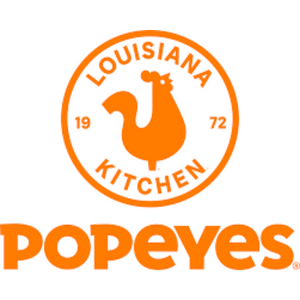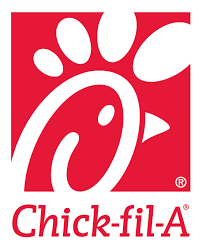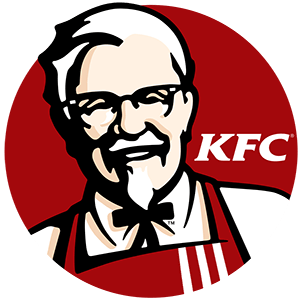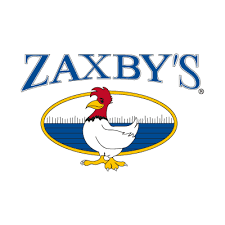Popeyes Franchise in 2025: Costs, Fee & FDD
Explore the world of Popeyes franchise opportunities, where Louisiana-style fried chicken meets robust growth and franchisee-first support. Dive into costs, earnings, and the unique flavor profile that sets Popeyes above its competitors in the competitive quick service industry.
Table of Contents:
Popeyes, founded in 1972 by Al Copeland in New Orleans, Louisiana, is a major player in the fast food industry, known for its distinctive Louisiana-style fried chicken. With its origins rooted in the rich culinary traditions of the South, Popeyes has grown from a single restaurant to a global brand. It has carved out a significant niche in the competitive fried chicken market, becoming a beloved name for millions of customers worldwide.
Popeyes’ menu is anchored by its famous fried chicken, particularly its spicy variant, which is marinated for at least 12 hours before being hand-battered and fried. The brand also offers a variety of other items, including chicken tenders, seafood, sandwiches, and signature sides like red beans and rice, Cajun fries, and biscuits. The core customer base includes families, young adults, and individuals seeking a flavorful, quick-service meal with a distinctive taste that stands out from other fast food offerings.
Today, Popeyes boasts over 3,000 locations across more than 25 countries, making it one of the largest chicken fast-food chains in the world. The brand serves millions of customers daily, with a presence in the United States, Canada, and various international markets. The chain’s success is reflected in its robust expansion and consistent customer demand, solidifying its status as a global fast-food powerhouse.
Popeyes provides comprehensive support for its franchisees, including a thorough training program that covers all aspects of restaurant operations, from cooking techniques to customer service. The brand also offers ongoing support through field operations, marketing assistance, and supply chain management to ensure franchisees have the tools they need to succeed, Popeyes’ commitment to innovation and quality helps franchisees stay competitive in the dynamic fast-food industry.
Popeyes Franchise Insights
- Popeyes’ year-over-year growth rate of 5% significantly outpaces the industry average of 0%, showcasing the brand’s strong market performance and continued consumer demand. This growth indicates Popeyes’ successful expansion strategies and solidifies its position as a leader in the quick-service restaurant sector.
- Popeyes’ signature spicy chicken is marinated for at least 12 hours using a proprietary blend of Louisiana spices, ensuring a unique and consistent flavor profile that differentiates it from other fast food chains.
- Popeyes is known for its franchisee-first philosophy, regularly involving franchise owners in decision-making processes and providing them with robust support systems, which contributes to higher franchisee satisfaction and success rates.
Franchise Key Indicators
Growth YOY (%)
5%
vs industry 0%
Total U.S. Franchised Units
3,035
3-year Failure Rate
3%
vs industry 11%
Sales-to-Investment ratio
0.8:1
How much does it cost to open a Popeyes franchise?
Understanding the potential investment size and capital requirements is crucial when considering opening a Popeyes franchise. These financial commitments, including initial franchise fees, equipment costs, and ongoing operational expenses, impact the feasibility and profitability of the venture. Thoroughly evaluating these factors ensures that potential franchisees are prepared for the financial responsibilities and can make informed decisions about their ability to sustain and grow the business, ultimately contributing to long-term success.
Min & Max Investment
Opening a Popeyes franchise involves several key costs, which are outlined in Item 7 of the Franchise Disclosure Document (FDD). you can see a breakdown of the costs to open a Popeyes franchise below from the most recent Item 7 below:
| Type of Expenditure | Minimum Investment | Maximum Investment |
|---|---|---|
| Initial Franchise Fee | $50,000 | $50,000 |
| Real Estate | Variable | Variable |
| Soft Costs | $10,000 | $420,000 |
| Site Work | $40,000 | $800,000 |
| Building | $700,000 | $1,600,000 |
| FF&E, Signage, and Technology | $325,000 | $850,000 |
| Initial Training | $17,200 | $24,200 |
| Opening Supplies | $13,000 | $26,000 |
| Insurance | $9,000 | $19,000 |
| Utility Deposits | $3,000 | $50,000 |
| Business Licenses | $1,300 | $6,500 |
| Additional Funds – 3 months | $20,000 | $30,000 |
| Total Estimated Initial Investment | $1,188,500 | $3,875,700 |
Item 7 in the Franchise Disclosure Document (FDD) is the “Estimated Initial Investment” section. It outlines the total costs a franchisee can expect to incur when starting a franchise, including the initial franchise fee, equipment, inventory, real estate, and other startup expenses. This section is crucial because it provides potential franchisees with a detailed understanding of the financial commitment required, helping them assess affordability and plan their investment strategy effectively.
Required Capital
To open a Popeyes franchise, the required capital involves both the initial investment and financial criteria set by the franchisor. Here’s a detailed look:
- Initial Investment The total estimated initial investment for a Popeyes franchise ranges from $1.19 million to $3.88 million. This estimate covers various startup costs, including the franchise fee, real estate, construction, equipment, initial inventory, and working capital for the first few months of operation. Assuming that you will finance your franchise investment, you should plan to have 20% of the total investment amount in the form of equity (cash) for the investment.
- Liquid Assets Requirement Popeyes typically requires franchisees to have a minimum of $200,000 in liquid assets. This ensures that the franchisee has enough readily available funds to handle unexpected expenses and maintain financial stability during the initial phase of the franchise.
- Net Worth Requirement Popeyes generally expects franchisees to have a net worth of at least $500,000. This net worth requirement includes the value of all assets minus liabilities and reflects the franchisee’s overall financial health and ability to manage the franchise.
How much does a Popeyes franchise owner make?
Calculating the salary of a Popeyes franchise owner involves analyzing gross sales to determine total revenue, assessing operational efficiency to understand profit margins, and accounting for franchisor fees and additional expenses such as rent, utilities, and payroll. Effective management of these factors can significantly impact the profitability and financial success of a Popeyes franchise owner. This comprehensive financial analysis helps estimate net profits, from which the owner’s salary can be derived. A clear understanding of these factors ensures accurate salary projections and financial planning for sustainable business operations.
Popeyes Revenue & Gross Sales
In 2023, Popeyes franchises reported median gross sales of $1,832,084, reflecting a 6% increase from the previous year. For 2024, this upward trend is expected to continue, with median gross sales projected to reach $1,942,009, marking another 6% growth. This consistent performance underscores the brand’s strong market presence and its franchisees’ ongoing success in capitalizing on its popular menu offerings.
Which key factors impact the average revenue performance of Popeyes franchisees?
The growth in U.S. franchisee median gross sales for Popeyes from 2022 to 2023 can be attributed to several key factors. Product innovation, such as the successful launch of the chicken sandwich, has attracted more customers and boosted sales. Enhanced marketing strategies, including effective promotions and national campaigns, have increased brand visibility and customer traffic. Additionally, the brand’s expansion into new markets and renovations of existing locations have improved its reach and customer experience. Operational efficiencies and improved supply chain management have also played a crucial role in managing costs and increasing profitability, contributing to the overall revenue growth.
Popeyes Franchise Operational Costs
When opening a Popeyes franchise, it’s essential to be aware of the ongoing operational costs to ensure smooth and profitable operations. Key expenses include:
- Food and Beverage Costs Regular purchase of ingredients and packaging materials.
- Labor Costs Wages and salaries for employees, including management and staff.
- Rent Monthly payments for leasing the restaurant space.
- Utilities Costs for electricity, water, gas, and other essential services.
- Maintenance and Repairs Routine upkeep and unexpected repairs for equipment and facilities.
- Supplies Expenses for cleaning materials, uniforms, and other operational necessities.
- Marketing Costs Contributions to local and national advertising efforts to attract and retain customers.
- Royalty Fees Payments to Popeyes based on a percentage of gross sales.
- Insurance Coverage for liability, property, and worker’s compensation.
- Technology Costs Expenses for point-of-sale systems, software, and other technology needs.
Managing these costs effectively will be crucial to maintaining profitability and ensuring the success of your Popeyes franchise.
Popeyes Franchise Fees
When managing a Popeyes franchise, it’s important to account for both ongoing and additional fees. Here are the relevant costs:
- Royalty Fees 5% of Gross Sales, payable weekly based on the prior week’s gross sales. This fee contributes to the overall franchisor support and brand maintenance.
- Advertising Contribution 4% of Gross Sales, also payable weekly on the prior week’s gross sales. This fund supports national advertising efforts to drive brand visibility and customer traffic.
- Advertising Co-op 0.5% to 1.75% of Gross Sales, determined by the Local Advertising Co-op and payable weekly. This contribution supports local marketing initiatives and, combined with the Advertising Contribution, ensures a total of at least 4% of Gross Sales is allocated to advertising.
- Additional Fees Costs for ongoing technology updates, training programs, and any other franchise-specific requirements not covered by the above fees.
Understanding these fees will help you budget accurately and maintain financial health while maximizing the benefits of the franchise’s marketing and support systems.
Popeyes Franchise Earnings
Based on the provided data, the estimated franchise earnings for Popeyes based on median gross sales of $1,832,084 is roughly $275,000. This suggest a 15% operating (EBITDA) margin. This increase indicates a strong performance, likely driven by effective marketing and operational efficiencies.
For a semi-absentee owner the estimated earnings would likely be a bit lower due to the need to hire a manager to operate the location.
How to Open a Popeyes Franchise
Becoming a Popeyes franchisee involves a structured process that ensures you’re well-prepared and aligned with the brand’s standards. Here’s a step-by-step outline of the process:
- Initial Inquiry Submit an inquiry through the Vetted Biz website or contact a franchise specialist directly. This first step helps you gather preliminary information and express your interest in becoming a franchisee.
- Franchise Application Complete and submit the franchise application form. This document provides Popeyes with essential details about your background, financial status, and business experience.
- Preliminary Evaluation The franchise team reviews your application and conducts an initial evaluation. They assess your financial qualifications, business experience, and alignment with the franchise’s values.
- Franchise Disclosure Document (FDD) Upon passing the preliminary evaluation, you will receive the Franchise Disclosure Document, which outlines the terms, costs, and obligations of the franchise agreement. Review this document thoroughly with your advisor.
- Franchise Interview Participate in an interview with the Popeyes franchise development team. This meeting allows both parties to discuss expectations, answer any questions, and ensure mutual compatibility.
- Site Selection and Lease Negotiation Once approved, work with Popeyes to select a suitable location for your restaurant. This involves negotiating the lease agreement and ensuring the site meets the brand’s requirements.
- Training Program Attend the comprehensive training program provided by Popeyes. This training covers operational procedures, marketing strategies, and customer service standards essential for running a successful franchise.
- Build-Out and Setup Oversee the construction and setup of your Popeyes restaurant according to brand specifications. This phase includes outfitting the location with required equipment, signage, and interior design.
- Pre-Opening Preparations Prepare for the grand opening by finalizing staffing, setting up supply chains, and conducting pre-opening marketing activities. Ensure all operational processes are in place and staff are trained.
- Grand Opening Launch your Popeyes restaurant with a grand opening event to attract initial customers and build local awareness. The opening marks the beginning of your franchise operations and the start of your journey as a Popeyes franchisee.
Pros & Cons
Pros
Strong Brand Recognition: Popeyes is a well-established brand with a loyal customer base, especially known for its unique Louisiana-style chicken. This strong brand presence can attract customers and drive sales from day one.
Proven Business Model: The franchise benefits from a successful business model that has been tested and refined over the years. This includes standardized procedures, marketing strategies, and operational efficiencies that have contributed to the brand’s success.
Comprehensive Support: Popeyes offers extensive support to its franchisees, including training, marketing assistance, and operational guidance. This support helps ensure that franchisees are well-prepared to run their businesses effectively.
Popular Menu Items: The franchise’s menu, featuring its famous spicy chicken and other popular items, continues to resonate with customers. This popularity can lead to strong sales and customer loyalty.
Strong Growth Potential: Popeyes has shown consistent growth and expansion, both domestically and internationally. Investing in a growing brand with a track record of success offers potential for long-term financial benefits.
Cons
High Initial Investment: The cost to open a Popeyes franchise can be significant, ranging from $1.19 million to $3.88 million. This includes franchise fees, real estate, construction, and equipment costs, which may be a barrier for some investors.
Operational Demands: Running a Popeyes franchise requires attention to detail and adherence to brand standards. Managing daily operations, controlling costs, and maintaining high levels of customer service can be challenging.
Market Competition: The fast food industry is highly competitive, with numerous other chains vying for market share. Local competition can affect sales and profitability, requiring effective marketing and operational strategies.




